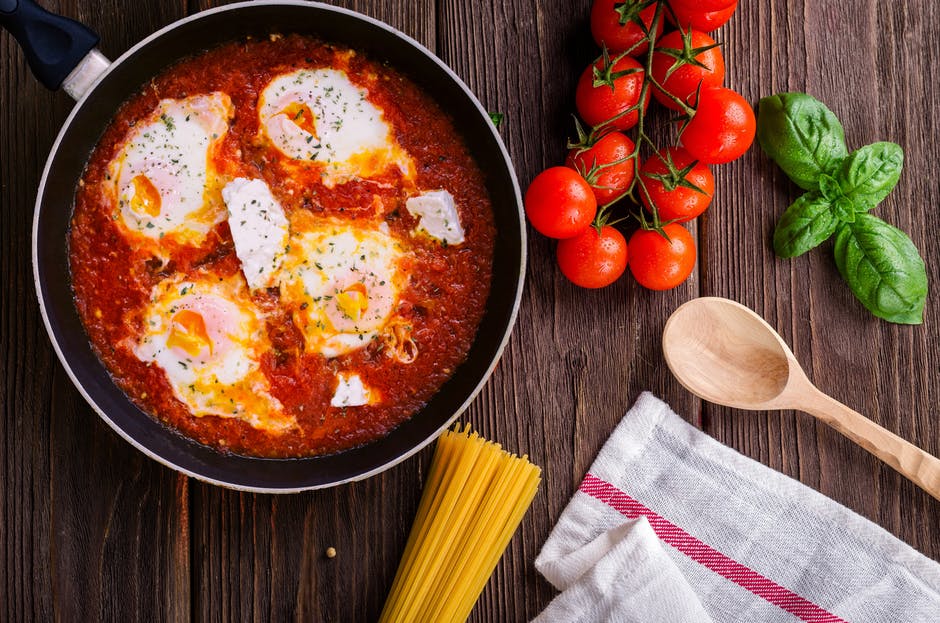Nonstick pans are the perfect addition to any kitchen! They make the process of cooking much easier for any chef, no matter how experienced. Burnt and stuck on food are less likely when you use a nonstick pan, but even nonstick pans need cleaning after each use.
When cleaning nonstick pans, you must keep in mind that the top layer of the pan is what keeps your food from sticking. It’s essential you keep this top layer in good condition at all times to ensure your food continues to cook well without trouble. Because of this, you must be extra careful when cleaning your nonstick pan to not damage this top layer.
The best way to learn how to clean a nonstick pan is to continue reading below. Here are a few tips and tricks for cleaning residue from nonstick pans for any home chef!
1. Avoid Using the Dishwasher
When you purchase your nonstick pans, such as Kitchen Essentials from Calphalon, you’ll notice that they’ll either say they’re dishwasher safe or not. Our advice is to avoid using the dishwasher for nonstick pans even if their cleaning instructions say it’s safe.
Dishwashers use abrasive cleaning products to clean your dishes. These soaps can cause damage to your nonstick pans. If damage occurs to the top layer on the pans, they’ll no longer help you cook your food without it sticking.
Instead, once done cooking, remove the pan from the heat source and allow it to cool. As soon as the pan’s cooled down, you can then clean it.
2. Wash with Soap and Water
It’s best to clean your nonstick pans, as soon as you’re done cooking and the pan cools. Choose a non-abrasive soap to wash your pans with. A gentle soap will prevent damages to your pan.
If you clean the pan directly after using it, then most of the debris will wash away quite easily. Don’t forget that cleaning the bottom of nonstick pans is just as essential. If all grease or other debris on the pan aren’t washed off before the next use, they can burn once the pan is heated again.
This can then cause stains, so be sure to remove everything.
3. Use a Microfiber Cloth
When cleaning with your gentle soap and water, avoid using abrasive cleaning pads. Rough sponges, scouring pads, or other rough surfaces shouldn’t be used on your pan. These can all cause damage to the surface of the pan.
Instead, be sure to use a microfiber cloth. If you want to use something else to clean your pans with, make sure it states it can be used on nonstick pans. To use extra caution, you can try using a cleaning material and see if it leaves any scratches as you go.
Pay close attention to how your pan reacts to the cleaning product and stop using it immediately if you notice it causing scratches.
4. Try Baking Soda for Grease
Any cooked-on grease or grime can be removed using baking soda. Baking soda contains no corrosive acids and won’t damage your nonstick pans. To use baking soda, mix water into your baking soda until it forms a paste.
Once you create a paste with the baking soda, you can then use it to clean your pan using a soft cloth.
5. Cook with Oil to Prevent Damage
Although your pans might not need oil on them to prevent your food from cooking, you should cook with oil to prevent damage. The oil helps protect the surface of the pan and can be used before and after using your pan.
Each time you cook with your nonstick pan, consider using between 1/2 and 1 teaspoon of oil.
6. Boil with Vinegar to Remove Oil
Sometimes, oil can be difficult to remove from the pan. If you have trouble removing oil from the pan, you can boil a vinegar and water mixture in the pan for easy oil removal. If the pan is shallow, then you can also cook this mixture on medium-high heat for about 5-10 minutes.
As the mixture cooks, you’ll begin to see the oil lift up from the pan. Remove the oil and dump the water. You can then wash your pan using hot soapy water and a soft cloth.
7. Dry and Layer with Caution
Before placing your nonstick pans in the cabinets for storage, make sure they’re completely dried off. If you’re going to stack your pans on top of one another, remember to layer with caution. When you place pans on top of one another, they can cause scratches to their surfaces.
To prevent this, you can place a soft dishcloth or a paper towel in between each pan. To save yourself from using up paper towels each time you clean your nonstick pans, you can even consider using reusable paper towels! This will create a barrier between the pans and prevent damages from occurring.
Cleaning Nonstick Pans Might Be Easier Than You Believe
Cooking with nonstick pans is a breeze! Cleaning nonstick pans is a bit more challenging, but with this guide in your hands, the cleaning process might be easier than you thought!
Although you will have to clean your nonstick pans a bit differently than your other pans, once you get in the habit of cleaning them using the steps listed here in this guide, it’ll become second nature.
Are you interested in other food and culinary topics? Check back with us regularly for more topics similar to this one and a few other topics as well!

